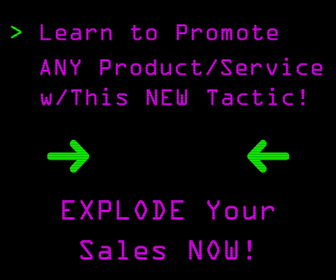At its core, marketing is all about compelling people to do something.
Whether it's swapping their email address for an in-depth ebook, buying a product from your online store, or clicking an affiliate link that takes them to Amazon, there's something you want people to do when they visit your website.
To do that, we use calls to action, also known as CTAs.
CTAs are critical to conversion.
And we get it — you might be shy about having too many of them prominently displayed on your site. No one wants to come across like a sleazy car salesman, pushing products in their audience's face nonstop.
But there's a good chance you don't have enough CTAs on your site, or that your CTAs aren't in a place where they're easy for people to see.
People aren't going to go out of their way to try to find the CTA.
You have to present it to them.
Adding more CTAs in the right locations could have a huge impact on your conversion rates. In a recent post at Quicksprout, Neil Patel explains why you need more of them.
Place CTAs everywhere
One major reason why most blogs aren’t as effective as they could be with their conversions comes down to one simple thing:
They don’t have enough CTAs.
Wait, what? CTAs?
CTA stands for call to action. It’s marketing jargon for asking the user to do something or to respond in a certain way.
It’s easy to think of the CTA in a simplistic way.
Buttons, right? A CTA is a button. Like this…
Whether or not you use the dreaded “submit” button copy is entirely up to you.
A CTA can be a button, but a CTA is a whole universe of things.
My point is this. Your CTAs should be more than just buttons. In fact, your CTAs should be everywhere on your page.
Let me be entirely transparent with you. I love blogging. I love the written word. I love content.
And when I feel as if my content is being crowded out by a bunch of rude CTAs, I get a little nervous. I might even get a little defensive.
If you’re feeling that right now, I understand.
But I still want you to consider the following statement: for your long-form blog to be effective, you should always be presenting the user with your call to action.
Instead of hiding your CTAs or consigning them to a button or two, put them out there—everywhere!
According to the principle of least effort, users are not going to work hard to respond to your CTA.
[image source: Quick Sprout]
The principle of least effort has its most profound applications in information-seeking contexts and behavior.
An information-seeking client will tend to use the most convenient search method, in the least exacting mode available. Information seeking behavior stops as soon as minimally acceptable results are found.
What does this psychological factoid have to do with your CTAs?
This: Make your CTAs easy and available for the reader to access.
By virtue of their activity, your blog reader is an information-seeking client. Your CTA is designed to secure some level of commitment from your readers before they leave.
If you have clear CTAs distributed throughout the blog, you stand a greater likelihood of engaging their attention and securing their conversion.
You can read more about optimizing your site for maximum conversions over at Quick Sprout.
CHALLENGE Yourself to Profit!
Free Download: Build Your Profit-Generating Online Business With This Free Blueprint
Sign Up, follow the easy steps and You'll get the tactics, strategies & techniques needed to create your online profit stream. It's free!





